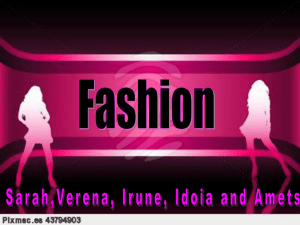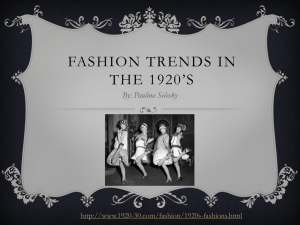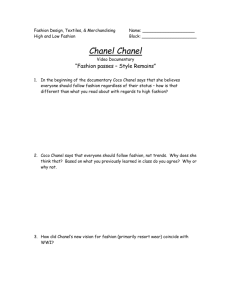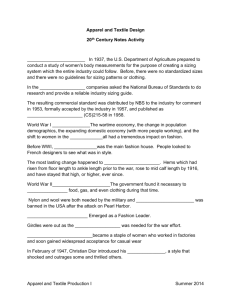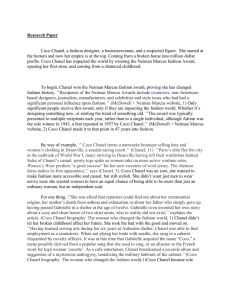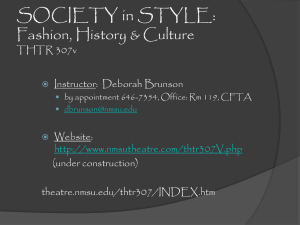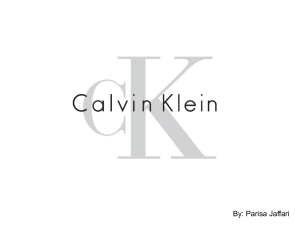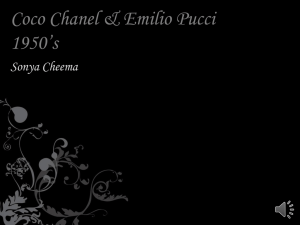1.2 Lecture
advertisement
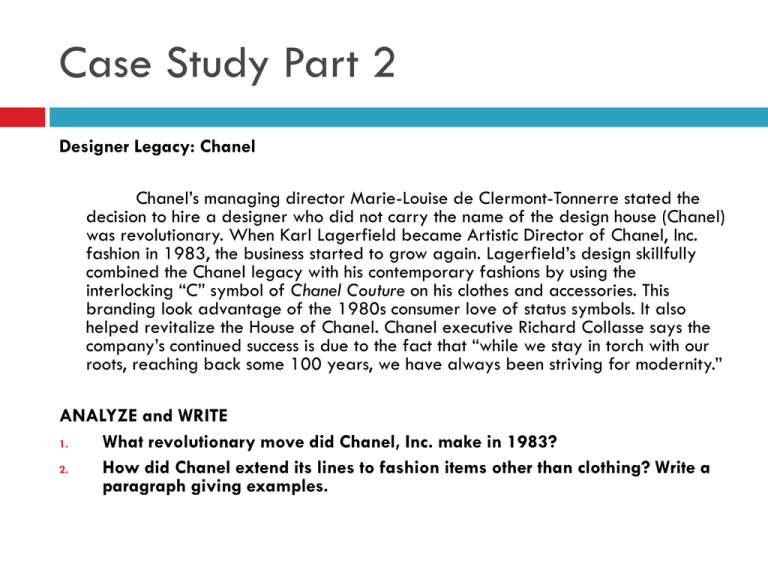
Case Study Part 2 Designer Legacy: Chanel Chanel’s managing director Marie-Louise de Clermont-Tonnerre stated the decision to hire a designer who did not carry the name of the design house (Chanel) was revolutionary. When Karl Lagerfield became Artistic Director of Chanel, Inc. fashion in 1983, the business started to grow again. Lagerfield’s design skillfully combined the Chanel legacy with his contemporary fashions by using the interlocking “C” symbol of Chanel Couture on his clothes and accessories. This branding look advantage of the 1980s consumer love of status symbols. It also helped revitalize the House of Chanel. Chanel executive Richard Collasse says the company’s continued success is due to the fact that “while we stay in torch with our roots, reaching back some 100 years, we have always been striving for modernity.” ANALYZE and WRITE 1. What revolutionary move did Chanel, Inc. make in 1983? 2. How did Chanel extend its lines to fashion items other than clothing? Write a paragraph giving examples. CHAPTER 1.2 Fashion History What You’ll Learn To identify the needs satisfied by clothing To discuss the early history of clothing To name some influential people in fashion history To identify specific styles in the 20th century. Why People Wear Clothes Physical Needs: Protection Psychological Needs: Appearance Enhancement Social Needs: Affiliation and Standards Sources of Clothing History Clothing tells us a great deal about social values at certain times in history. Centuries ago, people dressed according to what society allowed for the social class. Historical Trendsetters Elizabeth I Queen of England (1558 to 1603) This looks consisted of Tudor ruffs (large, round collar), epaulets (shoulders ornaments), jeweled wigs, plucked forehead and brows, rub-crushing corsets, and the farthingale, or skirt hoop. Louis XIV King of France (1643- 1715) He sent life-sized fashion dolls to every European court, so that all of Europe would know about Paris Fashion. Exquisite dolls were dressed in the latest styles. Tailors coped the clothes, footwear, hats, and accessories on the dolls for nobility in other countries. Marie Antoinette Queen of France (1775 to 1793) She was a trendsetter for ornate styles of the late 18th century. She used papier-mâché paste to whiten and stiffen her hair to extreme heights. Her excessive fashion included high headdresses, plumes and voluminous dresses. Jacqueline Kennedy Onassis She brought her understated elegance to fashion of the early 1960s as First Lady of the United States. While her trademark pillbox hat and her suits with three-quarter sleeves were famous, she had a sense of style for any type of attire. Beatles Famous trendsetting British band, wearing “mop-top” hairstyles. This fashion from the working classes challenged the shorthaired, conserved look of the crew cut. Fashion: th 20 Early 1900s 1920s 1930s-1950s 1960s 1970s 1980s 1990s Fashion Today Century to the Present Discussion What are three needs are satisfied by the use of clothing? What fashion trends emerged in the 1980s?
